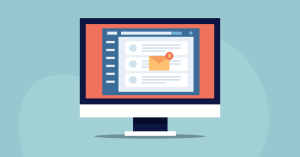We can all agree that email marketing is far from dead. However, the ‘one to many’ approach of email marketing is, quite rightly, on its last legs. Enter hyper-personalized email marketing—a strategy fit for 2025 that aims to generate higher open rates, increased engagement, and more conversions. This is the future of email marketing, and it’s time to embrace it.
There was a time, not so long ago when slapping a first name in the subject line of an email was enough to call it “personalized.” Today, that simply doesn’t cut it anymore. Today’s email subscribers expect more than token familiarity. They want timely, relevant, and contextually rich messages that speak directly to who they are, what they’ve done, and, most importantly, what they might want next.
What is Hyper-Personalization?
Hyper-personalization goes beyond simple demographics and list segmentation. It leverages powerful behavioral data, including browsing activity, past purchases, and real-time engagement, to create content that’s genuinely relevant to the subscriber. This enables marketers to dynamically change email content based on where an individual user is in their unique customer journey, what they’re likely to be interested in, and how they prefer to engage.
All of this delivers better open rates, stronger engagement, and most importantly, more conversions.
Core Hyper-Personalization Strategies for 2025
So now we know what hyper-personalized email marketing is, how do we put it to work? Here are four strategies to ensure your campaigns are firing on all cylinders.
- Behavioral Data is Your Best Friend: Click behavior, site visits, purchase history, and email engagement can and should inform the content your subscribers receive. For example, if a customer searches for a specific product but doesn’t buy, a follow-up email featuring that product, with real-time pricing or low-stock alerts, can be the nudge that seals the deal.
- Dynamic Content is Non-Negotiable: Why send one static message to thousands of subscribers when you can send thousands of uniquely tailored emails at scale? Dynamic content blocks make it possible to change imagery, copy, product suggestions, and CTAs based on user data. Whether you’re promoting seasonal deals or curating a product lineup based on recent behaviors, dynamic content is the engine of hyper-personalization.
- AI-Powered Recommendations: Artificial Intelligence isn’t replacing marketers – it’s making them smarter, faster, and more responsive. AI tools can analyze massive datasets in real-time to recommend the right products to the right subscribers at the right time. Think: “People who bought this also bought that” on steroids. Email marketing automation platforms can now serve product suggestions based on predictive modeling, not just historical behavior.
- Advanced Segmentation: Hyper-personalization isn’t about creating individual emails, it’s about using tools that allow you to segment based on engagement, lifecycle stage, geography, weather, device type, and more, enabling you to create campaigns that feel personal without being time-consuming.
OK, this all sounds great. But how do we actually put hyper-personalization into practice? Read on.
Ten Examples of Hyper-Personalization in Email Marketing
Here are 10 examples of hyper-personalization in emails that go beyond just “Hi [First Name]” and deliver real value to the customer experience:
1. Product Recommendations Based on Browsing Behavior
“Still thinking about that leather laptop bag?” If a customer viewed a product but didn’t purchase it, trigger an email featuring that item, with additional suggestions based on similar products they’ve browsed.
2. Abandoned Cart Recovery with Dynamic Discounts
“You left something behind – here’s 10% to make it yours.” Include the exact items left in the cart, along with real-time inventory updates or limited-time discounts to nudge them back.
3. Replenishment Reminders
“Running low on your favorite moisturizer?” For consumable products, send timely reminders based on purchase cycles (e.g., 30 days after the last order).
4. Weather-Responsive Content
“Stay dry out there – shop rain-ready gear for your area.” Use local weather data to promote relevant products like umbrellas, jackets, or sunscreen, depending on the forecast in the customer’s location.
5. Location-Based Store Alerts or Events
“There’s a wine tasting happening at our Dallas store this Saturday!” Target customers within a certain radius of a physical store with invites to local events or promotions.
6. Milestone Celebrations
“Happy 1st Anniversary with Us, John!” Celebrate customer loyalty with personalized messages and offers based on signup or first purchase anniversaries.
7. Post-Purchase Upsell or Accessory Recommendations
“Your new camera deserves a great lens.” After a purchase, recommend complementary products or accessories tailored to the item bought.
8. Subscription Preferences
“Want more DIY tips and fewer product promos?” Allow subscribers to set content preferences—and send tailored email streams that match their interests or lifecycle stage.
9. Dynamic Countdown Timers
“Your early bird discount expires in 03:42:10!” Use real-time countdowns based on individual activity (like the time they opened the email or activated an offer).
10. Behavioral Triggers Based on Inactivity
“Haven’t seen you in a while, Sam. Here’s 15% off your next order.” Re-engage dormant users with offers based on time since last interaction, purchase, or website visit.
Now you know what you want to do with your hyper-personalized email campaigns, it’s time to talk about the technology you need to deploy them.
The Tech That Powers Hyper-Personalized Marketing
Hyper-personalization wouldn’t be possible without the right tools. In 2025, marketing automation platforms like the emfluence marketing Platform make it easy to build responsive templates, plug in behavioral data, and run sophisticated campaigns without relying on a team of developers.
Third-party integrations with CRMs, ecommerce platforms, and data enrichment tools add even more depth, allowing marketers to pull in everything from loyalty status to product reviews and real-time inventory.
And let’s not forget the power of AI analytics, which can spot trends, identify churn risks, and even recommend send times and subject lines, improving performance while saving marketers time.
Challenges & Considerations
Of course, hyper-personalization doesn’t come without its challenges. Here are three considerations you need to make when rolling out your strategy.
- Privacy & Compliance: The more data you use, the more careful you need to be. Regulations like GDPR, CCPA, and whatever acronym gets introduced next require transparency and consent. Always ensure your data collection and usage practices are up to scratch.
- Data Overload: More data isn’t always better – especially if you don’t know what to do with it. The key is turning raw information into actionable insights. That’s where automation and AI can help, but human oversight is still essential.
- Message Fatigue: Just because you can personalize every email doesn’t mean you should. Over-personalization can feel invasive. The best campaigns strike a balance between being helpful, relevant, and respectful of boundaries.
Hyper-Personalization with a Human Touch
At emfluence, we help brands combine cutting-edge technology with smart, human-first marketing strategies. To learn more about how to harness AI and automation to hyper-personalize your email campaigns without losing the authenticity that builds trust, talk to one of our email marketing experts today at expert@emfluence.com.

